 |
SRGC Bulb Log Diary |
| Home Recommend This Site To A Friend |
|
BULB LOG 30 --- 20th July 2004 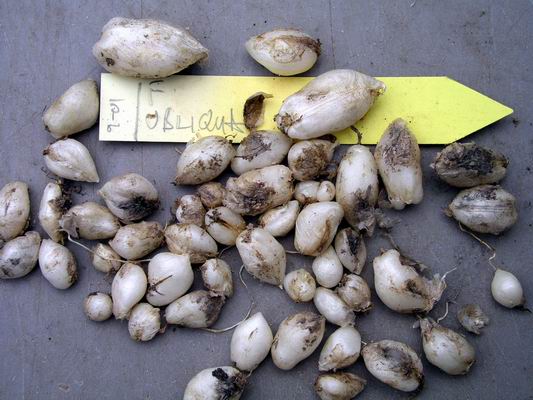 Frit obliqua seedlings This is the first re-potting of this pot full of Frit obliqua since it was sown in September 2001. They have had three growing seasons and the biggest bulbs are three years old, however, you will see that there are three distinct size groups. This represents the sporadic germination over three years with one, two and three year old bulbs all from the same seed sowing. This is why it is best to leave pots of bulb seed for at least three years before you re-pot. 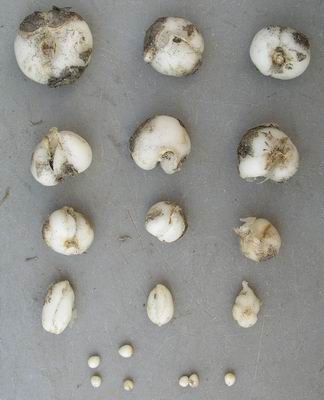 Frit bulb progression It will take an average of five years to grow flowering sized frit bulbs from seed. Above you can see the yearly growth with flowering sized bulbs on the top row. 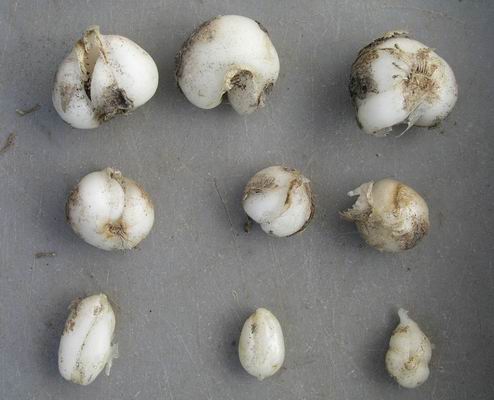 Frit bulbs single scale If you look more carefully at row two, three and four, you can see that the bulb consists of one scale which on the top row has started to wrap around. After one more season of growth the bulb will be mature and will have two scales of almost equal size.  Frit whittallii bulbs The larger of these Frit whittallii bulbs shows the typical twin scale fritillaria bulb. Re-potting is also the time to look out for problems and to try and diagnose what caused them - the bulb on the top right is showing signs of rot. It was the only one in this pot with this problem so what went wrong? 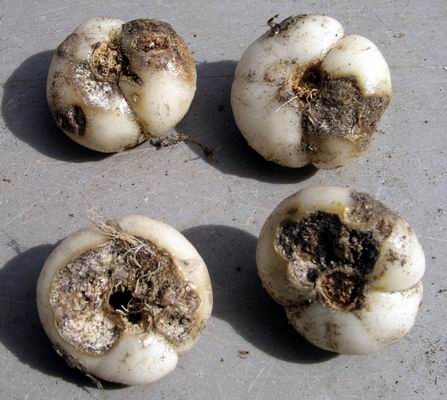 Rot on new bulbs Here are some Frit pontica bulbs also suffering from rot. As the rot is on the new bulbs the problem has to have occurred since they formed in the spring. The most likely cause is that the compost was too cold and wet at this time of year. As we had a cold and wet spring it is not difficult to understand that I applied too much water at that time. It is not easy to get it right all the time especially when our climate can swing so dramatically from day to day. You can water on a beautiful sunny spring day and then a front comes across and we have a month of cold wet weather. 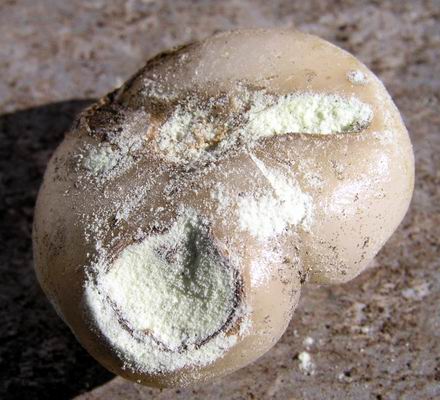 Bulb with sulphur Small amounts of rot can be treated with some sulphur powder and if the damage is more extensive then chop the bulbs up like I showed in a previous log, remove all the rot and place the good material in a bag of sand.  Frit pontica ghosts Here we see a different problem. This time it is the old bulb that has rotted leaving a ghost bulb, there are no signs of roots and no new bulbs or bulbils have formed. For some reason these bulbs have not started into growth and when water was applied they have just rotted away, at the same time the other bulbs in the same pot are perfectly healthy. I sometimes believe that bulbs have a life span, just like humans they get more fragile and susceptible as they get older and some live for longer than others. 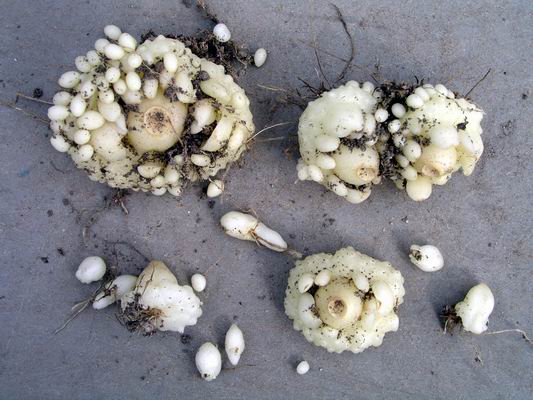 Frit affinis bulbs The North American rice grain bulbs are completely different from the Eurasian twin scale bulbs they not only look different but have a different growth cycle. For instance the rice is produced in the spring on the new bulbs not on the old bulbs in the autumn like their Eurasian cousins. The saucer shaped basal plate has scale like eruptions from which the flower spikes arise. When a bulb reaches a certain size it will produce two flower spikes, each of which will form a new bulb at their base (top right). 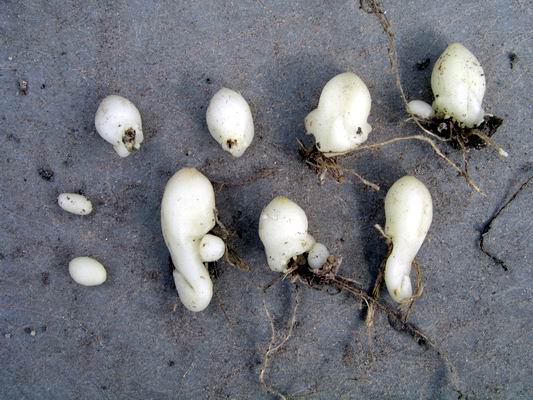 F. affinis young bulbils The rice grains take up to five years to reach flowering size and go through various manifestations before they start to form a basal plate (top right). 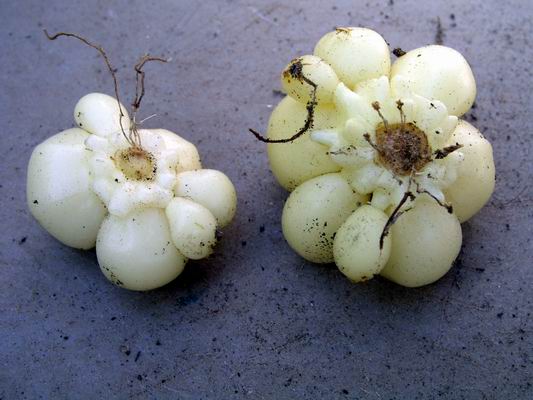 F. biflora bulbs F. biflora has a similar structure with larger loosely attached scales on a disc shaped basal plate. 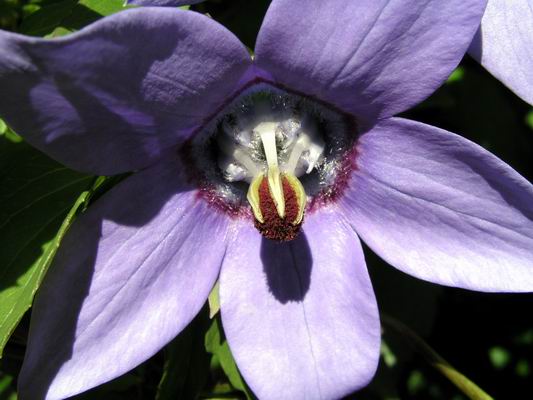 Codonopsis 1 Now for a flower or two. I was intrigued by these Codonopsis grey-wilsonii (formly C forrestii). Follow the progress of the stigma and stamens over a few days. Note stamens gripping the style.  Codonopsis 2 Stamens start to spread. 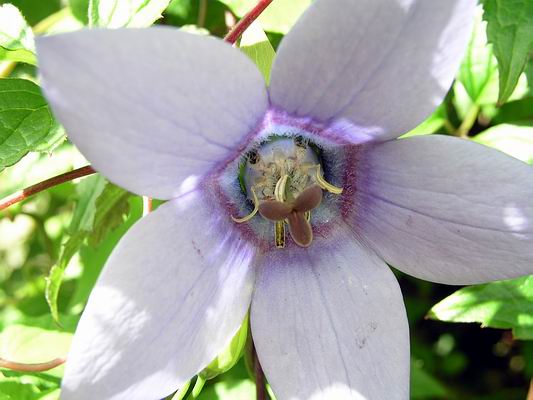 Codonopsis 3 Style splits into three to reveal the stigma. Plants are fascinating when you watch them closely and are not just mesmerised by their beauty. ^ back to the top ^ |